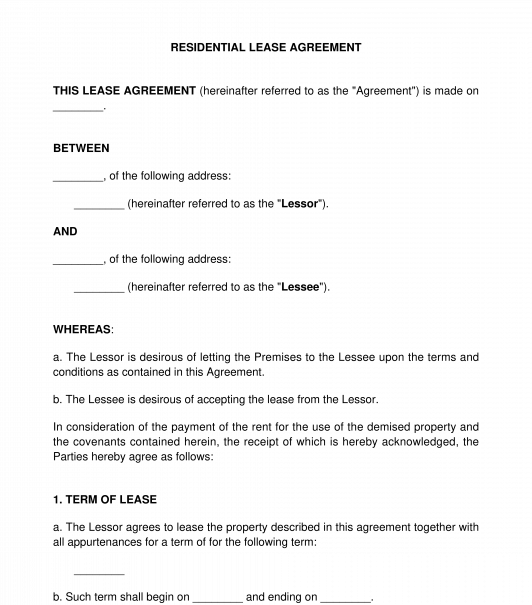 05/08/2025
05/08/2025

Answer a few questions and your document is created automatically.

Your document is ready! You will receive it in Word and PDF formats. You will be able to modify it.

 05/08/2025
05/08/2025
 Word and PDF
Word and PDF
 4 to 6 pages
4 to 6 pages



A Residential Lease Agreement, also known as the House Lease Agreement, is an agreement used by the lessor to rent out his/her property to another party. The parties to this agreement are the lessor (also called the landlord) and the lessee (also called the tenant). The lessor is the party that owns the rental property and grants the lessee the exclusive possible to his/her property. The rent is the amount of money the lessee pays for the use of the property.
This agreement outlines the description of the rental property, the particulars of the parties to the agreement, the duration of the lease, the date the lease will commence and the date it will end, the rent payable on the rented property, the terms, and conditions by which the lessee holds the property, etc. A good lease agreement should have as much information as necessary to let the lessee know what to expect from the lessor and also protect the lessor from a bad tenant.
Although leases and tenancies are used interchangeably, a lease agreement is used when a property is let for more than 3 years, while a tenancy agreement is used when a property is let for a period of three years or less.
How to use this document
This Lease Agreement can be used for a person who decides to let his/her property to another person.
In this agreement, the form filler will give the basic information, such as the description of the property to be rented, the particulars of the parties to the agreement, the duration of the lease etc. The form filler can also include more detailed information to show obligations, terms and conditions which the lessee must comply with.
The form filler can specify what the lessee can or can not do. For example, whether the lessee will be required to insure the property against any damage done to the property, whether the lessee is allowed to have animals as pets in the property, etc. In summary, this agreement will provide everything to ensure that the parties can outline all their expectations from their relationship.
After filling the form, it should be printed and signed by the parties and given to their witnesses who will fill their particulars and sign the agreement. Parties should keep a copy for their records.
Applicable laws
The following laws are applicable:
How to modify the template
You fill out a form. The document is created before your eyes as you respond to the questions.
At the end, you receive it in Word and PDF formats. You can modify it and reuse it.
Residential Lease Agreement - FREE - sample template
Country: Nigeria